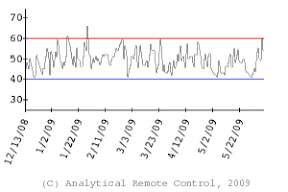Identity Theft Ranking of Corporate America
Consumers really have no reliable way to determine
the relative safety of their business and banking
relationships against identity theft. With the lack
of widely available public information available,
the average citizen faces a diminished ability to
discern which institutions are actively competing
to protect you from identity theft.
That is until just now.
According to a recent story published by the
New York Times based on an original paper
published by consumer advocate Chris Hoofnagle,
"... some institutions have a far greater
incidence of identity theft than others."

You might recall, as we had previously reported,
that until 2005 there really was no nationally
binding law which required companies to disclose
identity theft or major security breach incidents
to the general public.
For years, private banks and businesses could
keep the magnitude and frequency of fraudulent
account activity hidden from the public at large.
Big banks and other businesses would rather
keep you uninformed of those losses suffered
by millions of account holders nationwide.
Instead of funding more proactive ways to
combat fraud and identity theft, the general
trend was to pour more money into advertising
and brand promotion as means to simply over
power any negative perceptions associated with
incidents that became too large for segments of
the population and the mass media to ignore.
However, in 2005 everything changed with the
landmark legislation requiring companies to
publicly disclose within 30 days incidents of
security breaches negatively impacting
consumer information.
Since that time, over 125 million Americans
have been the innocent victims of unauthorized
exposure of their sensitive consumer information
such as social security numbers, credit information,
etc.
Now let's roll the calendar forward to current day
2008.
While some industry trade research has indicated
identity theft to be on the decline, the official
government watchdog's statistics paint a different
picture:
The Federal Trade Commission reported last
month that calls about identity theft to
its consumer complaint hotline constituted
36 percent of all calls last year — little changed
from 37 percent in 2005 according to the New
York Times.
The banking industry tends to believe there
has already been enough disclosure, however:
Doug Johnson, a senior policy adviser at
the American Bankers Association, an
industry trade group, said that revealing
internal bank data on identity theft would
not do much to help fight the problem.
He said that it might actually distract
financial institutions, which now privately
share information among themselves and
collaborate to fashion antifraud techniques.
So, our tip for today is for you to be the
judge of where to conduct financial related
business based on safety to account holders.
Take a look at the chart as well as the original
full report by Mr. Hoofnagle and decide on your
own.
We simply, in this case, provide the access to
you being a more informed consumer in fighting
back against identity theft and consumer fraud.
PS: Make sure to tell a friend or associate about
this identity theft prevention tip.
















